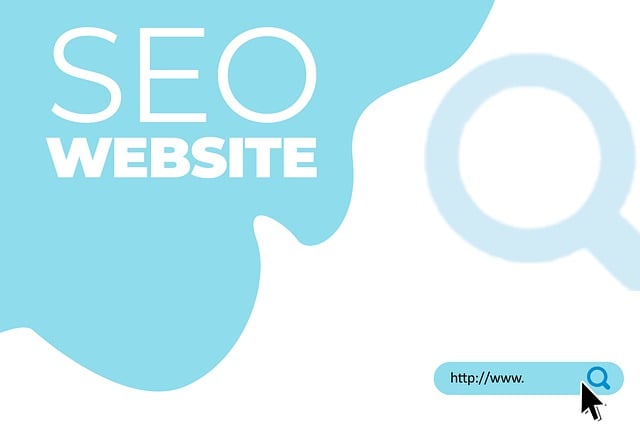White-Hat SEO Techniques are ethical practices that prioritize user experience and high-quality content over manipulative strategies. By focusing on relevant keyword optimization, meta data creation, mobile responsiveness, and building genuine backlinks, businesses can achieve natural and sustainable search rankings. These techniques not only increase online visibility but also build user trust, leading to higher engagement and conversion rates. Continuous monitoring of search trends and algorithm updates is essential for maintaining rankings and adapting to the evolving digital landscape.
In the digital landscape, ethical SEO practices are paramount for long-term success. This article delves into White-Hat SEO Techniques – the ethical approach to boosting online visibility. We explore key principles, from on-page optimization and off-page tactics, to user experience and algorithm adaptability. Understanding these techniques empowers businesses to secure reputable backlinks, enhance organic growth, and maintain robust online presence in a constantly evolving digital environment.
Understanding White-Hat SEO: The Ethical Approach

White-Hat SEO Techniques are the ethical and moral standards that guide search engine optimization practices. It involves a set of strategies focused on delivering genuine value to users, rather than attempting to manipulate search engine rankings through illicit means. These techniques prioritize creating high-quality content, ensuring website accessibility and usability, and building legitimate backlinks from authoritative sources.
By adopting White-Hat SEO, digital marketers focus on long-term sustainability and user experience. This approach avoids risky strategies that can lead to penalties from search engines. Instead, it encourages best practices such as keyword research, optimal on-page optimization, mobile-friendliness, and content marketing. Such methods not only help websites rank higher but also attract and retain a genuine audience, fostering a healthier and more robust online environment.
Key Principles of Implementing Effective White-Hat Strategies

The success and longevity of any online presence hinge on a foundational understanding of White-Hat SEO Techniques. These principles, grounded in ethical practices, prioritize user experience and quality content creation. By focusing on providing valuable information, improving website accessibility, and adhering to search engine guidelines, businesses can climb search rankings naturally and sustainably.
Key strategies include optimizing for relevant keywords through insightful research, crafting compelling meta tags and descriptions, and ensuring site speed and mobile responsiveness. Building high-quality backlinks through genuine collaborations and engaging content also falls under this ethical framework. These practices not only boost search engine visibility but foster trust among users, leading to higher engagement and conversion rates.
On-Page Optimization: Techniques for Organic Growth

On-Page optimization is a cornerstone of ethical, or White-Hat SEO techniques. It involves refining your website’s content and structure to better align with user search intent and search engine algorithms. This includes optimizing meta titles and descriptions, ensuring keyword usage is natural and relevant within content, and creating high-quality, engaging content that provides value to visitors. Effective on-page optimization also takes into account mobile responsiveness, page loading speed, and internal linking strategies to enhance user experience and encourage longer browsing sessions.
By focusing on these White-Hat SEO Techniques, you’re not only boosting your website’s search engine rankings but also building a strong foundation for long-term organic growth. Search engines reward websites that offer a positive user experience, and implementing these practices ensures your site is not only visible but also attractive to both search algorithms and human visitors alike.
Off-Page Tactics: Building Reputable Backlinks

Off-page tactics play a crucial role in ethical SEO strategies, focusing on building reputable backlinks to enhance search rankings. White-hat SEO techniques emphasize natural and genuine link acquisition, ensuring that your website earns high-quality backlinks from authoritative sources. This involves engaging with industry influencers, contributing valuable content to relevant online platforms, and participating in forum discussions to establish yourself as a thought leader. By providing insightful information and engaging with your audience, you attract natural backlinks as other websites recognize the value of your content.
Building reputable backlinks requires a strategic approach. It involves researching and targeting websites that align with your industry and target audience. Reach out to these sites for potential collaboration opportunities, such as guest blogging or creating co-marketing campaigns. When done right, these efforts result in high-quality backlinks that signal to search engines the trustworthiness and relevance of your website. Remember, quality always trumps quantity; a few well-placed, relevant backlinks carry more weight than numerous links from low-authority sources.
User Experience and Website Structure for Better Rankings

A key aspect of ethical SEO is prioritizing user experience (UX), as search engines like Google favor sites that offer a positive, intuitive browsing journey. Well-structured websites with clear navigation and fast loading speeds encourage visitors to explore further, signaling to algorithms that your site is valuable and trustworthy. This involves creating content hubs organized logically around relevant keywords, making it easy for users to find what they need. White-Hat SEO Techniques include optimizing page titles, meta descriptions, and headings with targeted keywords while ensuring content remains unique, engaging, and useful.
Additionally, mobile responsiveness is essential as a growing number of searches are conducted on smartphones and tablets. Adapting your site’s design for different screen sizes demonstrates accessibility and user-friendliness, further enhancing UX. By focusing on these factors, you not only improve search rankings but also build a loyal audience who appreciate a seamless digital experience.
Continuous Monitoring and Adapting to Search Engine Algorithms

Search engine algorithms are in a constant state of evolution, and what works today might not be effective tomorrow. This is why continuous monitoring is a crucial aspect of ethical SEO practices. White-Hat SEO Techniques advocate for staying ahead of these changes by regularly analyzing search trends, algorithm updates, and competitor strategies. By doing so, SEO professionals can adapt their strategies promptly to maintain or improve website rankings.
This proactive approach involves keeping up with Google’s Webmaster Guidelines and industry best practices. Regularly auditing website performance, optimizing content, and ensuring a user-friendly experience are all part of this process. This dynamic nature of SEO ensures that websites remain in line with search engine expectations, promoting long-term sustainability and success in an ever-changing digital landscape.
